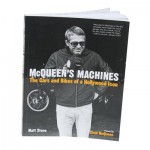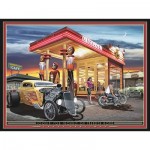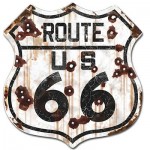It’s always a great time to brush up on your mechanical knowledge, so we’ve pulled together all the supplies you’ll need to ace your next project. No matter what the automotive subject, you’ll find links to helpful formulas, calculators, and notes below. Feel free to print ’em out and stuff them in your Trapper Keeper—or whatever it is kids use these days.
Math
Things got a little fuzzy for us after Algebra I, but most of the A+ students in class had something in common: a good calculator. Here are three very good calculators that will help you do some very important automotive math:
Science
For us, high school science meant memorizing formulas and blowing things up. We put together a list of key mechanical formulas to help you avoid blowing things up in the garage. Check out our earlier post on the 13 Key Automotive Formulas You Should Know.
English/Language Arts
If you’re going to survive in a gearhead world, you’ve got to know the lingo. That’s why we compiled an A-Z Glossary of Hot Rod Terminology to help speak the language. It’s OK to admit it–you probably don’t know everything that’s in this extensive collection of gearhead words and phrases.
See also: Camshaft Glossary and Tire Glossary.
 Reading
Reading
Reading is fun—especially when the book’s topic is related to cars. We put together a list of 13 awesome books that’ll have you doing more than just looking at the pictures. But don’t worry—despite the title of the post (Book Report: 13 Must-Read Books for Gearheads), there’s no homework required.
Geography
We couldn’t really afford a field trip this year (the OnAllCylinders emergency levy failed), so we’ve brought cars from around the world to you! Thanks to the magic of Facebook, readers from all over the world submitted their finished and in-progress projects. See what’s going on in the global automotive community in this worldwide Facebook Gallery.
Art
Automotive art can be a lot things—sculptures, drawings, photography, etc. We’d prefer to share the joy of painting by passing along this whole series of helpful guides to automotive painting. The six-part series covers everything from equipment and supply lists to helpful clean-up tips.
 Home Economics
Home Economics
That’s right—we chose home ec. over auto shop. Problem with it?
Fact is you’re probably beyond Auto Shop 101. Instead, we’ve got manly, car guy decorating tips, cool hot rod-themed decor, and tons and tons of ways to make your money go farther. Home Economics.
Social Studies
Delve into the plight of an American icon—old Route 66. Find links to the latest news on the Mother Road and see how you can get involved with its revival with our Route 66 revival post. You may even get extra credit.


The “plug and play” calculators are great for our Summit Racing classroom. The only problem I’m having is trying to accurately calculate the compression using dome top pistons of unknown dome displacement volume.
To be more specific, I have a set of new old stock Manley #48182 forged pistons that are .020” oversize (4.020”), and designed to fill the small (~62 cc) combustion chambers of early Ford D1AE-GA, 351C 4-V heads.
Of course the most common and accurate method of determining chamber volume is by mocking up the head /piston/block assembly and using a burette to measure the light viscosity fluid amount used in each cylinder at TDC.
But my question is about how to determine a pistons dome volume without going through the burette and mock up process. These pistons were very popular back in the day because of their durability in Pro Stock competition engines but since they have been obsolete for so long, the manufacturer couldn’t provide me with any specifications when I contacted them.
If the dome shape consisted of straight lines and right angles to form a wedge, the actual volume above the piston deck could be calculated with reasonable accuracy. But to closely mirror the unique combustion chamber design of the high-port iron Cleveland head that contributed to multiple NASCAR wins and what could be best described as NHRA Pro Stock domination during the 70’s, required the dome to have large valve reliefs and a prominent fire slot as a part of the forging instead of being machined in as an additional step during the finishing process.
Having custom pistons made for Fords that utilize canted valve Cleveland style heads is the best way to keep accurate information about dome volume and other technical details. The additional cost is soon forgotten with each new WIN light !
And the beat goes on……